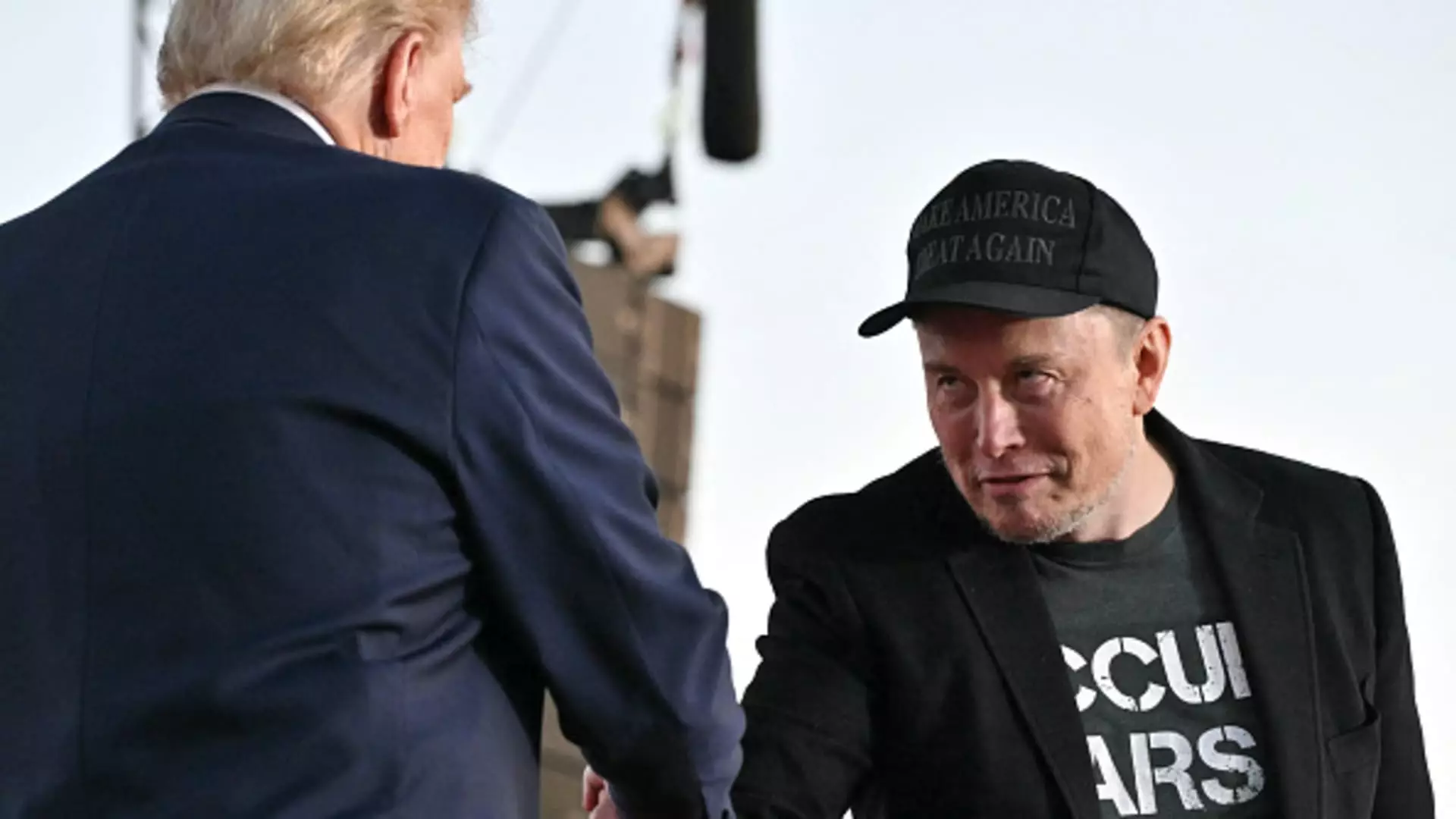In a noteworthy turn of events on a Monday morning, the stock of electric vehicle giant Tesla experienced a significant uptick—reportedly rising by approximately 7.98% in premarket trading. This surge coincided with a Bloomberg report suggesting that the incoming administration of President-elect Donald Trump is prioritizing the establishment of a federal regulatory framework for self-driving vehicles within the U.S. Department of Transportation. The implications of such a move could reshape the landscape for autonomous vehicles and serve as a substantial catalyst for Tesla’s ongoing technological ambitions.
Following the news, Tesla investors appeared invigorated by the prospect of regulatory clarity in the often-complex domain of autonomous driving. A federal framework could potentially pave the way for Tesla to accelerate its long-promised developments in self-driving technology. For years, the automaker has projected an image of a future where fully autonomous vehicles are commonplace, yet actual progress has remained elusive. This regulatory push from the new administration is perceived as a vital step in transforming Tesla’s lofty promises into operational reality.
Interestingly, while the report stems from anonymous sources, its impact on Tesla’s market performance underscores the relationship between governmental direction and corporate innovation. The speculative nature of the reported policy galvanizes investor enthusiasm, reflecting a broader trend where market behaviors increasingly intertwine with political developments. However, it is crucial to acknowledge that CNBC’s attempts to verify this information have remained inconclusive, which raises questions about the speculative nature of such market reactions.
Elon Musk, the visionary behind Tesla, is strategically positioned to benefit from his ties to the incoming administration. Having been a vocal supporter of Trump’s previous campaign, he now finds himself in a favorable light as one of the administration’s entrepreneurial figures. Recently, Musk was appointed alongside former presidential candidate Vivek Ramaswamy to lead the newly established Department of Government Efficiency, humorously referred to as “DOGE.” Under this new arrangement, Musk has the potential to influence governmental processes, particularly regarding technology and innovation policies.
The ongoing discourse surrounding regulatory frameworks reflects a critical juncture for Musk and his companies. The systematic dismantling of perceived bureaucratic barriers may not only benefit Tesla but also facilitate advancements across the automotive industry, encouraging competition and innovation in the self-driving space. Nevertheless, with such influence comes significant responsibility, as Musk navigates the delicate balance between progress and safety in technological developments.
Despite the excitement surrounding the announcement, several challenges still loom large over Tesla’s autonomous vehicle aspirations. The concept of a fleet of robotaxis—autonomous vehicles that operate without human oversight—has captivated imaginations but remains fraught with obstacles. Musk’s recent unveiling of the Cybercab—a concept vehicle devoid of traditional controls—exemplifies the bold vision for Tesla’s future. Priced at $30,000, the Cybercab represents an ambitious leap toward the realization of widespread autonomous vehicle integration, yet its actual deployment remains to be seen.
Compounding Musk’s challenges are competitors like Waymo, which have effectively implemented self-driving technologies on public roads. The advancements by such firms serve as a reminder that while ambitions may be grand, the actual realization of autonomous driving technologies involves navigating a landscape filled with legal, ethical, and technological complexities.
Looking forward, as Trump’s transition team actively seeks to appoint policy leaders for the Transportation Department, the potential for innovative regulatory frameworks becomes exciting. With figures like Emil Michael—an experienced executive from Uber—potentially involved in shaping policy, the dialogue around self-driving vehicles may evolve rapidly.
For Tesla, clarity in regulatory guidance could mean the difference between a fragmented future or a streamlined path to market dominance. However, as the company ventures further into the unchartered waters of automation, it must prioritize safety and public trust alongside its technological goals. The interplay between government direction and corporate innovation will undoubtedly define the future of autonomous vehicles, shaping the parameters for a thriving industry that few can predict with certainty. As Tesla rides this wave of political and market momentum, it remains imperative for Musk to translate excitement into tangible outcomes that resonate with consumers and regulators alike.

Leave a Reply